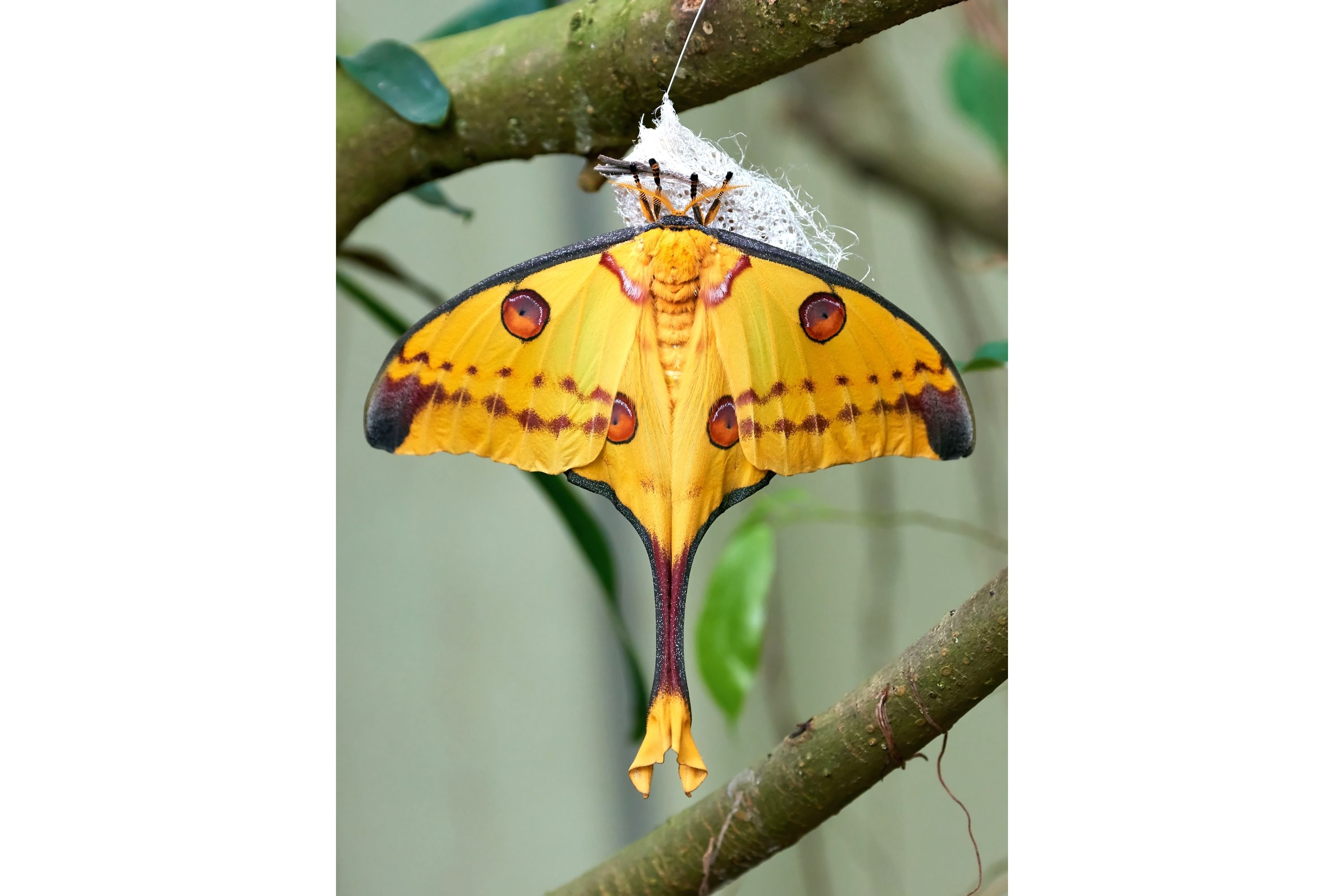Comet moth
(Argema mittrei)

Description
The comet moth or Madagascan moon moth (Argema mittrei) is a moth native to the rain forests of Madagascar. The species was first described by Félix Édouard Guérin-Méneville in 1847. The male has a wingspan of 20 cm (7.9 inches) and a tail span of 15 cm (5.9 inches), making it one of the world's largest silk moths. The female lays from 120 to 170 eggs, and after hatching, the larvae feed on Eugenia and Weinmannia leaves for approximately two months before pupating. The cocoon has numerous holes to keep the pupa from drowning in the daily rains of its natural habitat. The adult moth cannot feed and only lives for 4 to 5 days. Although endangered in the wild due to habitat loss, the comet moth has been bred in captivity. In its natural habitat, larvae feed on Weinmania eriocampa, Uapaca species, Eugenia cuneifolia and Sclerocarya birrea. Substitution plants are Cotinus coggygria, Eucalyptus gunnii, Malosma laurina, Pistacia terebinthus, Pistacia lentiscus, Rhus copallinum, Rhus typhina, Schinus molle, Schinus terebinthifolius, Toxicodendron pubescens, Mimosa species and Liquidambar styraciflua. This moths figures on the former banknote of 1000 Malagasy ariary. Argema is a genus of moths from the family Saturniidae, commonly known as moon moths. They are distinguished by long tails on their hindwings.
Taxonomic tree:







